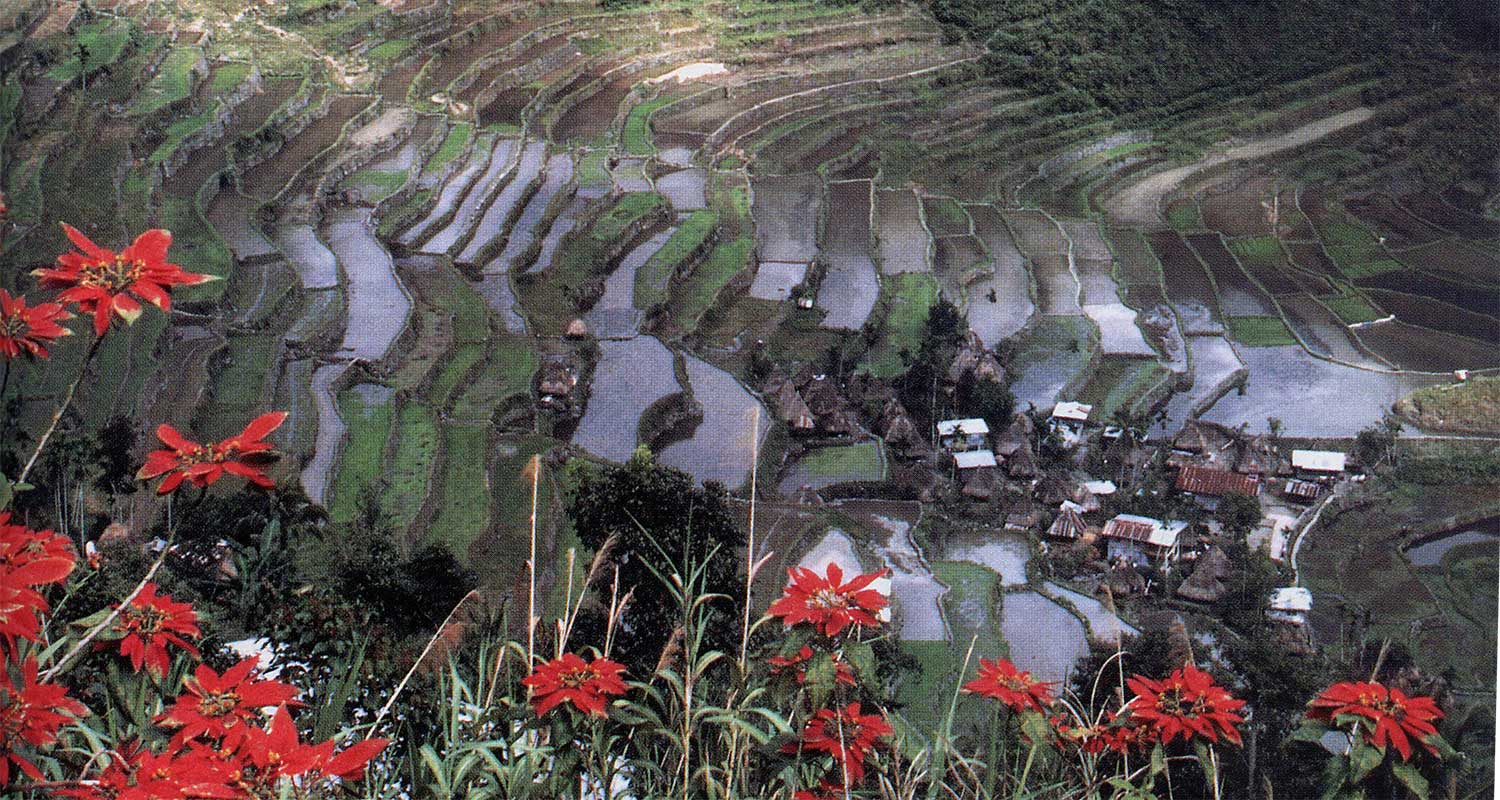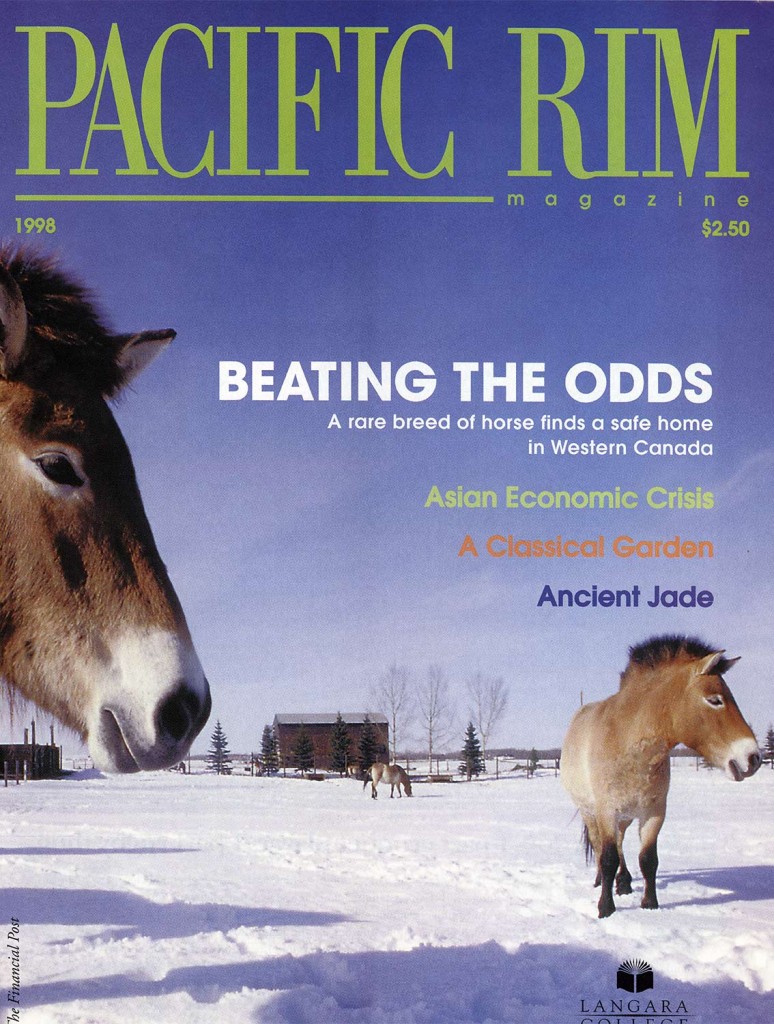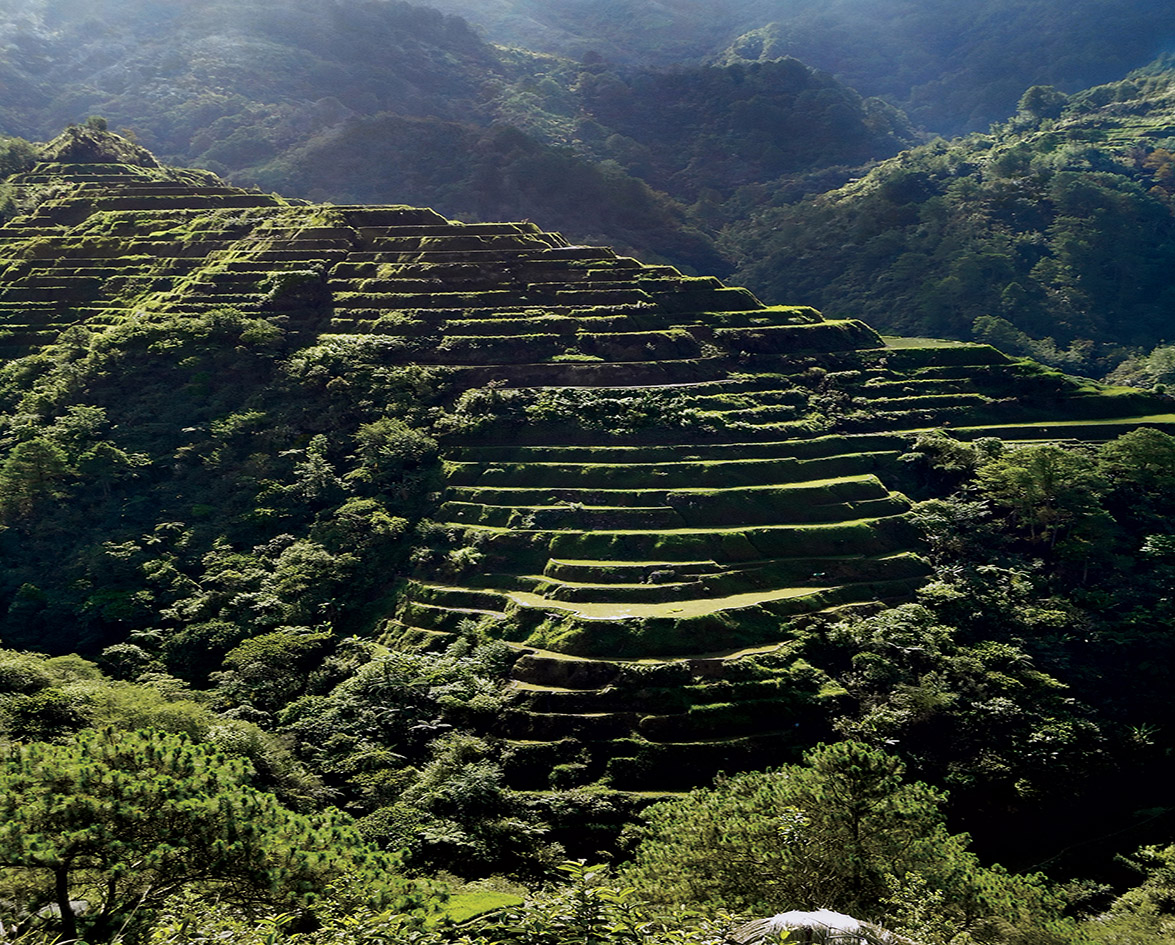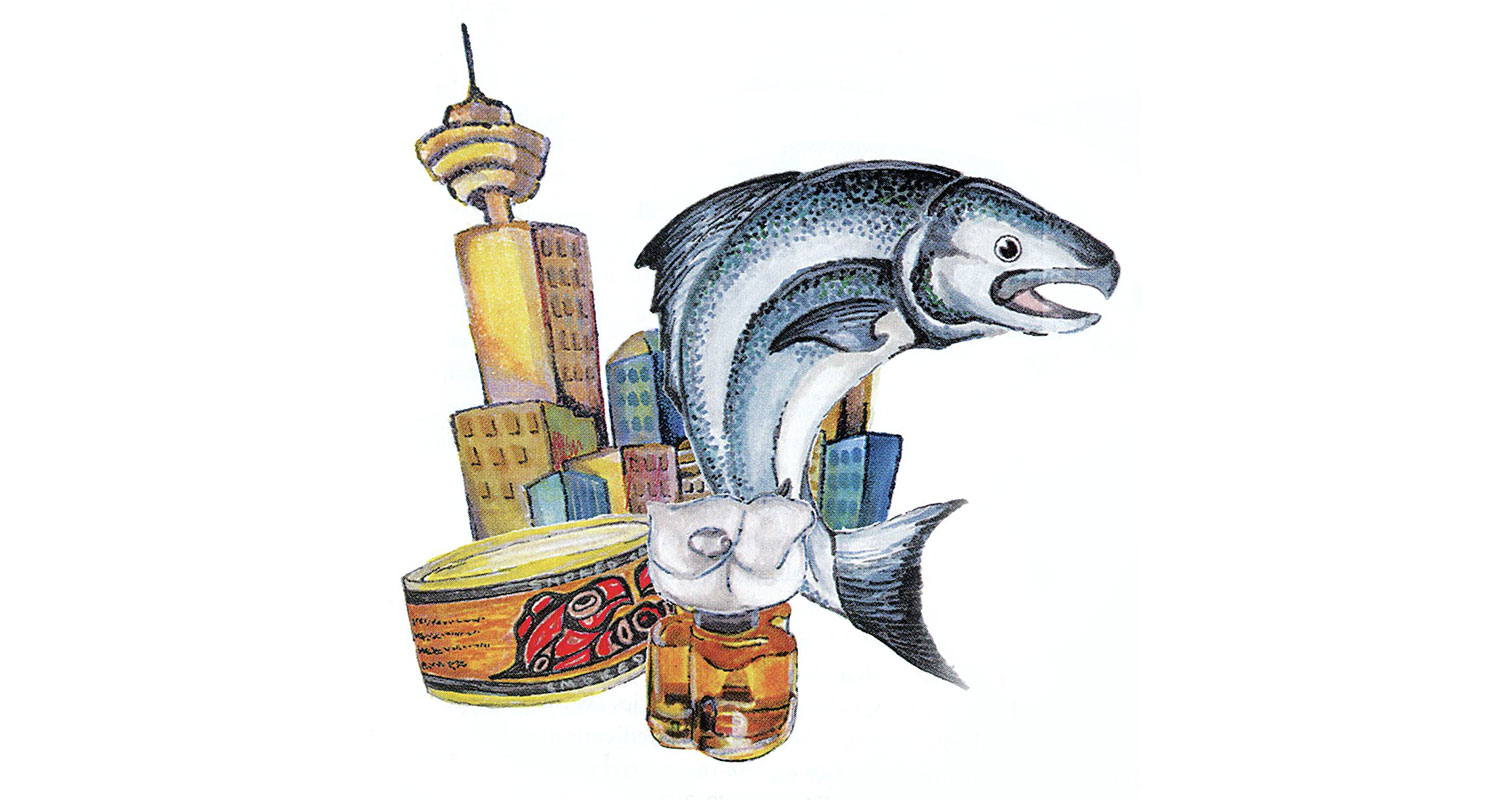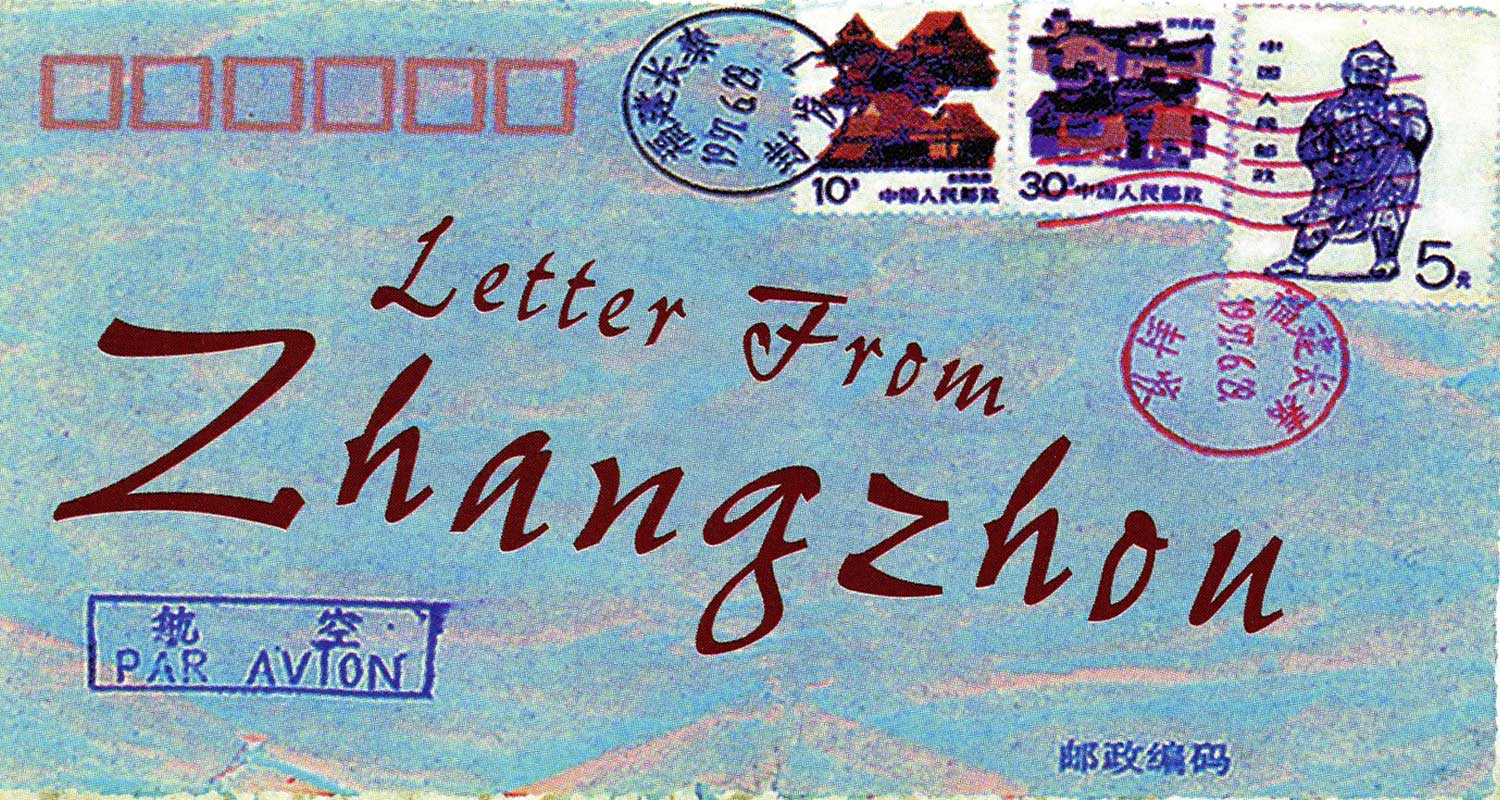It was hard to imagine a place more damp. Mist hovered languorously in the air. The surrounding jungle was lush and green, save for the odd scarlet poinsettia tree.
We were 4,000 feet above sea level in Banaue, a small market village in Ifugao province. Located north of Manila in the Philippines, Ifugao province is famous for the handiwork of its people, who increased cultivable lands by carving gigantic rice terraces from the sides of mountains. Taking an estimated 2,000 years to build, the still-productive rice terraces rise from the valley floor to heights of up to 3,000 feet, a feat of engineering so substantial that some call them the eighth wonder of the world.
Traditional Ifugao Dance
On our first evening in Banaue, we met in the hotel lobby to watch a traditional Ifugao dance. A group of tribesmen, dressed in the traditional garb of woven g-strings and feathered headdresses, shuffled slowly in a circle, looking embarrassed, while staging the mock-sacrifice of a small wooden pig. One Ifugao, unable to conceal a giggle, and doing his best to sound like a dying pig, let out a high-pitched squeal to indicate the kill was complete. We recognized some of the dancers who, then dressed in their Western attire, had waited on our table in the hotel restaurant less than an hour earlier.
First Glimpse Of The Rice Terraces
The next morning, the rest of the group decided to view Banaue’s nearby rice terraces from the safety of the tour bus, while three of us elected to trek to Batad, a small village reputed to have spectacular terraces. We were matched with a local guide, an lfugao native of indeterminate age named Mani. Wearing nylon jogging shorts, a white T-shirt, and a pink bandanna-but no shoes-he made us appear comically overdressed in our layers of clothing and heavy hiking boots.
We were driven to the trailhead by jeepney, those ubiquitous army vehicles left by the American forces after the liberation in 1945. In Ifugao province, local legend has it that if you run over a chicken, you must compensate its owner twelve fold. It is no wonder that our driver abruptly swerved to avoid chickens on the side of the road, but paid no attention to pedestrians, who deftly scrambled for safety.
Cut crudely into the sloping mountainside, the road narrowed and was passable only by single vehicles. Its edge was visibly eroding and, in parts, abruptly dropped off into a deep gorge. Rocks lay in piles where land had recently slid from the side of the mountain. “There is money set aside for the roads,” Mani explained in slightly accented missionary-school English, adding with noticeable sarcasm, “We have never seen it, but we are told there is money set aside.”
We finally reached the footpath leading to the top of Batad’s rice terraces. It was impossibly steep and slick. Our hiking boots were nearly useless. We might as well have been wearing plastic slippers. As we slid along, we were passed by groups of Ifugao women and children heading for Banaue. The women’s grins betrayed brown-stained teeth, the result of regularly chewing the betel nut, a natural stimulant. Most carried bags of rice on their heads for selling in the market. The bags were massive, but the women carried them effortlessly. Like our guide, many were barefoot, revealing remarkably wide, sinewy feet. As they climbed the smooth inclines, their splayed toes curled into the mud, easily pulling them forward. To help us gain a foothold, Mani used his own powerful toes to dig grooves in the dirt.
The path ended and we were overlooking the Batad rice terraces. Shaped like an immense amphitheatre, these terraces are over 2,000 feet high-the height of a twenty-storey building. In the valley below, we could see the palm-covered roofs of small huts and the steeple of the village church.
The Village Below The Batad Rice Terraces
This was supposed to be the end of our trek, but we convinced Mani to take us to the village below. We began descending the small steps built into the rock walls, which allow the Ifugao people to climb the terraces to plant rice and do battle against soil erosion and pests, such as the evocatively named army worms that periodically infest the paddies. The ancient walls, with sheer drops on either side, were built by hand using primitive tools. Most were moss-covered, and many were coming loose. We struggled to maintain our balance, clinging to each other to keep from falling.
In earlier times, when Ifugao men were warriors, Mani might have strutted along the boundary walls during a bangiban or war dance, wielding a spear and shield. Instead, our guide, whose lung capacity seemed unaffected by his chain-smoking, began to saunter easily down the narrow, slimy walls, cigarette in hand.
As we neared the village, we could see the small huts we had gazed at from above. Most were built in traditional Ifugao fashion-on piles with pyramid-shaped roofs of dried palm leaves and no windows-but a few sported more modern corrugated tin roofs. Wooden rice-pounding equipment, large mortars and pestles, lay unused beneath some houses. It was late December-the rice would not be harvested until July. After drying, it would be pounded by hand and stored.
“There is money set aside for the roads,” Mani explained in slightly accented missionary-school English, adding with noticeable sarcasm, “We have never seen it, but we are told there is money set aside.”
The path wound its way around and in some cases directly beneath, the small huts. Ifugao men, wearing their traditional g-strings and headdresses, lay dozing on the hut floors. Small groups of children dressed in T-shirts and shorts giggled as we scrambled to stay upright in the mud. Turkeys swaggered around us, scattered by the barking of a pack of plump, imperious dogs.
Once on the valley floor, Mani led us to a tiny restaurant consisting of two crudely built wooden tables in a small house. We ate lunch-a dish of fragrant, local rice stir-fried with eggs and vegetables. Over lunch, Mani showed us a photo of his wife, who was working as a nanny in Hong Kong, leaving their two children in Mani’s care. He had only visited her twice in five years. We asked if she earned much money. “Not enough,” he replied, shaking his head in resignation.
After lunch, we began to retrace our steps, climbing the terrace walls to reach the path. To scale the wet rock, we had to fall on all fours and grip it with our bare hands, like overgrown children learning how to crawl. We quickly became breathless, while Mani, lighting yet another cigarette, scampered up the steps ahead of us.
The Dangerous Road
We reached the trailhead, where the jeepney driver stood waiting. As we drove back to Banaue, we noticed the road had become worse. More rocks lay in heaps, evidence of recent landslides. We looked at each other apprehensively as the jeepney came to a stop before a large boulder blocking our way. We were only about halfway to Banaue. Just then a large rock landed on the roof of the jeepney. Mani tilted his head toward the side of the mountain, warily watching for more falling rock. Out of desperation, we got out to help Mani and the driver slowly roll the massive boulder out of the way.
Finally, we arrived back in Banaue. It was dusk. Because of our detour into Batad, we were late. The tour operator was visibly angry -she had heard reports of several people dying in nearby landslides, and was worried about us. The rest of the group was already back at the hotel, looking disappointed. Apparently, their view of the Banaue rice terraces had been obscured by low cloud. One of them asked us, “Was it worth all the effort?” We were utterly drenched. Our clothes were streaked with mud. Our muscles had stiffened. We were limping.
“Absolutely,” we said.





